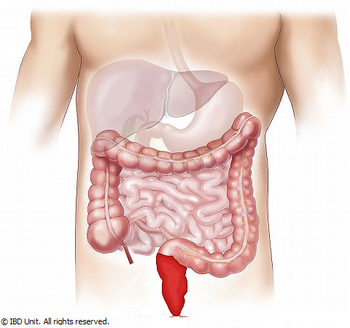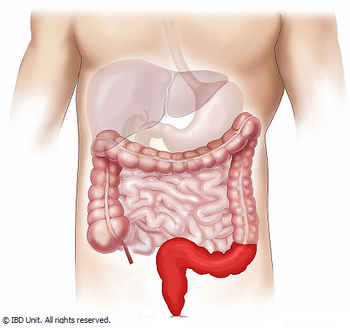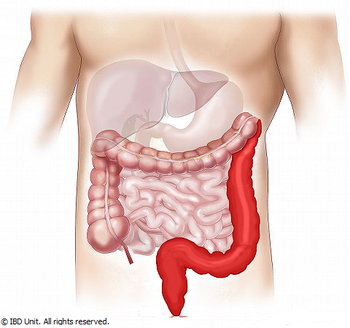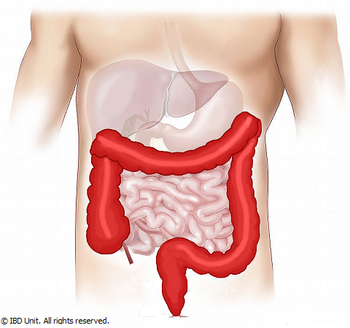Ulcerative colitis
Ulcerative Colitis (UC) is one of the two main forms of Inflammatory Bowel Disease (IBD).
Ulcerative Colitis (UC) is a condition that causes inflammation and ulceration of the inner lining of the rectum and colon (the large bowel). Inflammation is the body’s reaction to injury or irritation, and can cause redness, swelling and pain. In UC, tiny ulcers develop on the surface of the lining and these may bleed and produce pus.
The inflammation usually begins in the rectum and lower colon, but it may affect the entire colon.
WHAT ARE THE SYMPTOMS?
UC may range from mild to severe, and will vary from person to person. Please refer to Clinical Presentation for the list of the most common symptoms.
WHAT ARE THE DIFFERENT TYPES OF ULCERATIVE COLITIS?
Ulcerative Colitis (UC) is generally categorized according to how much of the colon is affected.
Proctitis

In proctitis, only the rectum is inflamed. This means that the rest of the colon is unaffected and can still function normally. For many people with proctitis the main symptom is passing fresh blood, or blood stained mucus. You may get diarrhea, or you may have normal stools or even constipation. You may also feel an urgent need to rush to the toilet. Some people with proctitis often feel that they have an urge to pass a stool, but cannot pass anything because the bowel is actually empty. This is called tenesmus.
Proctosigmoiditis

In some people, the sigmoid colon (the short curving piece of colon nearest the rectum) may also be inflamed – a form of UC sometimes known as proctosigmoiditis. The symptoms are similar to those of proctitis, although you are less likely to have constipation with proctosigmoiditis.
Left-sided (distal) colitis

In this type of UC the inflammation starts at the rectum and continues up the left side of the colon (also known as the distal or descending colon). Symptoms include diarrhea with blood and mucus, pain on the left hand side of the abdomen, urgency, and tenesmus.
Pancolitis (extensive, total colitis)

Pancolitis extends along most of the colon. Extensive or total colitis can cause very frequent diarrhea with blood, mucus, and sometimes pus. You may also have severe abdominal cramps and pain, tenesmus, and weight loss. In milder flare-ups the main symptom may be diarrhea or looser stools without blood.
Very rarely, when the inflammation is severe, digestive gases may get trapped in the colon, making it swell up. This is known as toxic megacolon and it can cause a high fever as well as pain and tenderness in the abdomen. It is essential to get treatment quickly for this condition, as it may need surgery.
CAN ULCERATIVE COLITIS AFFECT OTHER PARTS OF THE BODY?
Ulcerative colitis (UC) can cause complications (extra problems) outside the digestive system. Over a third of people with ulcerative colitis develop other conditions, mainly affecting the joints, eyes and skin. Refer to the Extraintestinal Manifestations section for more information.
You may find helpful information available in the IBD diagnostics, IBD treatment and IBD and lifestyle sections.









